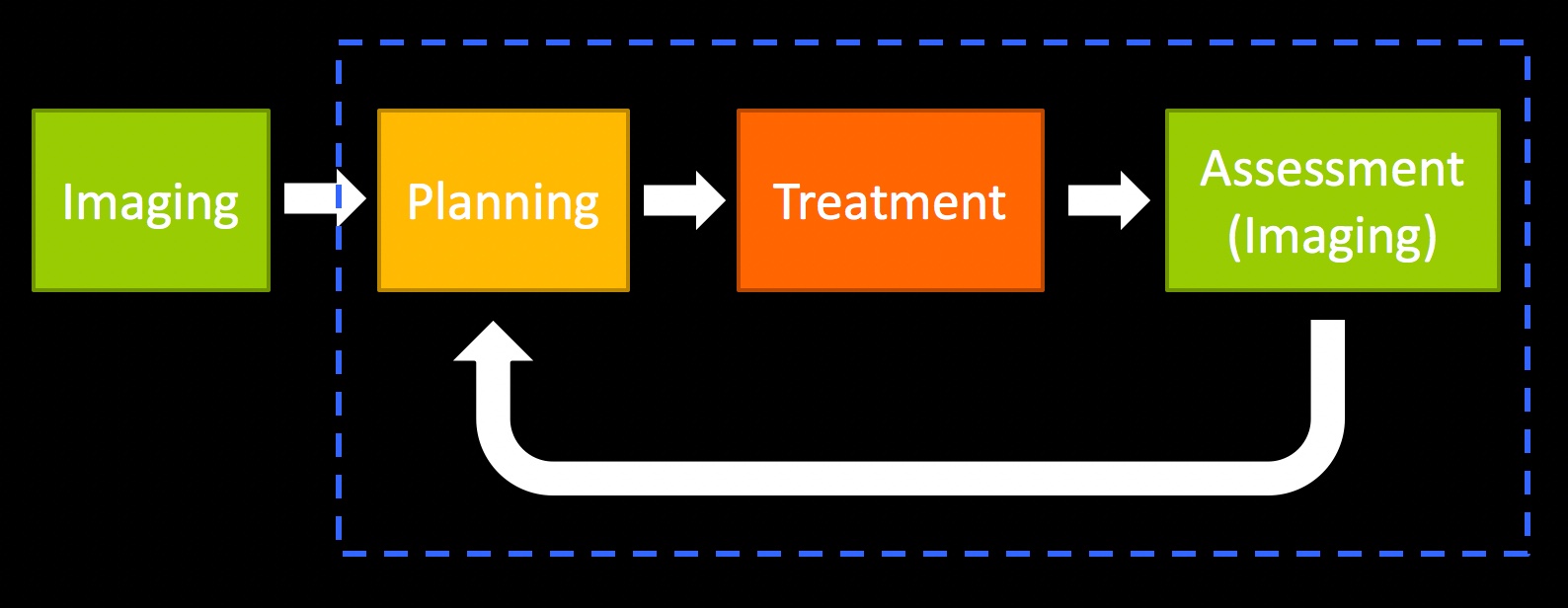Anatomical changes during radiotherapy
Radiotherapy is generally delivered over the course of several weeks, during which time the tumor and normal anatomy can change greatly. Understanding the type and magnitude of change helps determine the effect on delivered dose and targeting accuracy, as these issues may adversely effect patient outcome. Using repeat ‘offline’ CT imaging of patients during treatment, we measured a variety of different effects, including one of the first measurements of change of the respiratory pattern during treatment. These types of effects are directly used in generating safety margins for treatment, so the impact is important for clinical treatment. The following image shows the basic concept of adaptive radiotherapy, where images and information acquired during treatment is incorporated back into the treatment planning process to update and refine the current treatment plan.

Efficient adaptive radiotherapy
Due to the high prevalence of changes in tumor shape and position relative to sensitive organs, adapting the original treatment plan in response to these changes is a high-focus solution to improving the accuracy and precision of radiation therapy. Our lab’s role in this area has been to design clinically efficient and effective strategies for locally-advanced lung cancer to overcome the stigma of adaptive radiotherapy as too aggressive and costly. Specifically, we have designed free-breathing treatment strategies that were designed to adapt to the changing tumor safely. This effort culminated in a simple strategy to boost residual disease in a clinically realistic manner without the potential for missing microscopic disease burden.
Estimating the cumulative delivered radiation dose
Using deformable image registration to accumulate the delivered dose to tissue over a several-weeks course of radiotherapy may better estimate the actual delivered dose compared to the estimate from the planned dose, which is calculated before the start of the treatment course on a snapshot of the initial anatomy. Our lab’s role in this area has been to evaluate the error in the accumulation process, to build methods to reduce this error, and to use cumulative dose to estimate the potential benefit of new radiotherapy technologies.